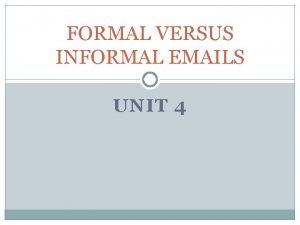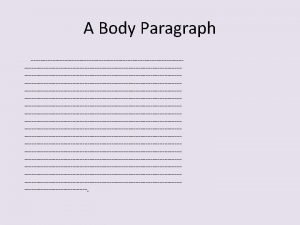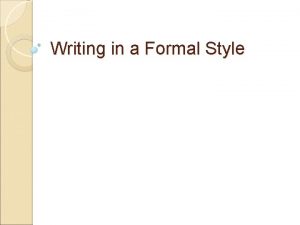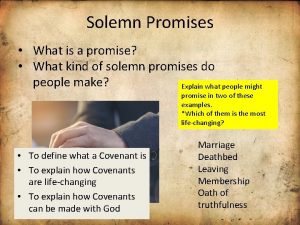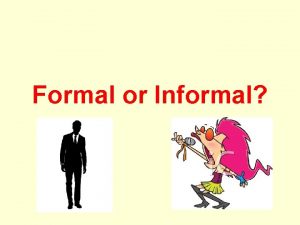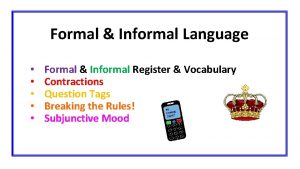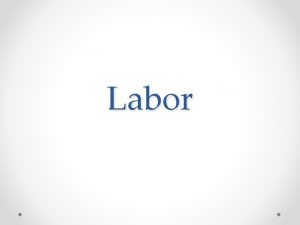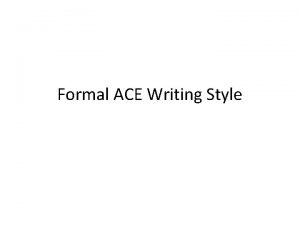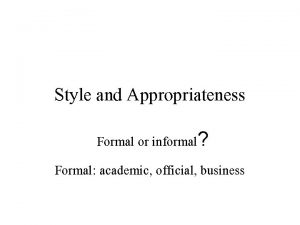FORMAL VS INFORMAL WRITING STYLE What do you












- Slides: 12

FORMAL VS. INFORMAL WRITING STYLE

What do you already know? Think about how you communicate with different types of people. Do you use the same tone, words, and phrases to communicate with your friends as you do when you communicate with your parents or your teachers?

Why you need to know In every culture around the world, the way people are expected to communicate with friends, strangers, or people in authority over them differs. If you want people to hear what you have to say, it pays to learn how to communicate in different ways.

Knowing Your Audience When we communicate with others, we need to consider with whom we are communicating. That person is our audience.

Knowing Your Purpose When we are communicating, we also need to think about our purpose for communicating. Sometimes we communicate to entertain Sometimes we communicate to inform Sometimes we communicate to persuade

Audience & Purpose To determine whether we should communicate informally or formally, we combine what we know about BOTH our audience and the purpose for our communication. Then, we pick the style that we think will best open our audience up to listen to our ideas.

What is the difference between formal and informal writing? Formal Writing Style Informal Writing Style The tone is polite, but impersonal Avoids using contractions and slang Avoids using abbreviations Maintains a serious tone Avoids using first and second person pronouns (I, you, we, and me). Often uses “one” or “the reader” instead. The tone is more personal Freely uses contractions and slang Freely uses abbreviations May use humor or more casual tone Freely uses first and second person pronouns Word choice tends to be precise or technical Word choice may be more vague; everyday phrases may be used Found most often in scholarly books Found most often in personal e-mail and articles, technical reports, research and in some business correspondence, papers, and legal documents nonfiction books of general interest, and mass-circulation magazines

Formal vs. Informal Writing Formal Writing Style The tone is polite, but impersonal Informal Writing Style The tone is more personal Examples: Formal • To Whom it May Concern, • Many people enjoy amusement parks. • Studies show many people spend too much time on the computer. Informal • Dear Grandma, • You like amusement parks, right? • Do you spend too much time on the computer like many people do?

Formal vs. Informal Writing Formal Writing Style Avoids using contractions and slang Informal Writing Style Freely uses contractions and slang Examples: Formal • It is important to do homework. • Going to an amusement park was a thrilling experience. • It does not take a genius to understand the concept. Informal • It’s important to do homework. • Going to an amusement park was cool! • It doesn’t take a genius to get it.

Formal vs. Informal Writing Formal Writing Style Maintains a serious tone Informal Writing Style May use humor or more casual tone Examples: Formal • Thank you for sending the package. It was a thoughtful thing to do. • A person should want others to take time to read what he or she writes. Informal • Thanks for the package. It was thoughtful of you. • Who would be crazy enough to write something that nobody reads?

Formal vs. Informal Writing Formal Writing Style Avoids using first and second person pronouns (I, you, we, and me). Informal Writing Style Freely uses first and second person pronouns Examples: Formal • When one is preparing to cook, washing ones hands should be the first step. • The author advises the reader not to judge a book by its cover. Informal • When you are preparing to cook, wash your hands first. • I think that you should not judge a book by its cover.

Formal vs. Informal Writing Formal Writing Style Informal Writing Style Word choice tends to be precise or technical Word choice may be more vague; colloquial phrases may be used Examples: Formal The lunch served in the cafeteria today was not very appetizing. The food was over cooked, smelled terrible, and tasted awful. Instead of serving students substandard food, the school should look into bringing in food from a caterer or local restaurant if at all possible. Informal Lunch in the cafeteria today was nasty. It looked, smelled, and tasted bad. The school shouldn’t serve nasty food like that. They should bring in food from a restaurant or something.
 What is informal style
What is informal style Informal style
Informal style El lenguaje formal e informal
El lenguaje formal e informal Unit 3 formal informal and nonformal education
Unit 3 formal informal and nonformal education Writing formal and informal emails
Writing formal and informal emails Cambridge formal letter format
Cambridge formal letter format Formal letter format in english
Formal letter format in english Characteristics of academic writing slideshare
Characteristics of academic writing slideshare Formal writing style
Formal writing style Formal style writing examples
Formal style writing examples Technical academic writing
Technical academic writing If you made a formal solemn promise you
If you made a formal solemn promise you Informal casual
Informal casual




